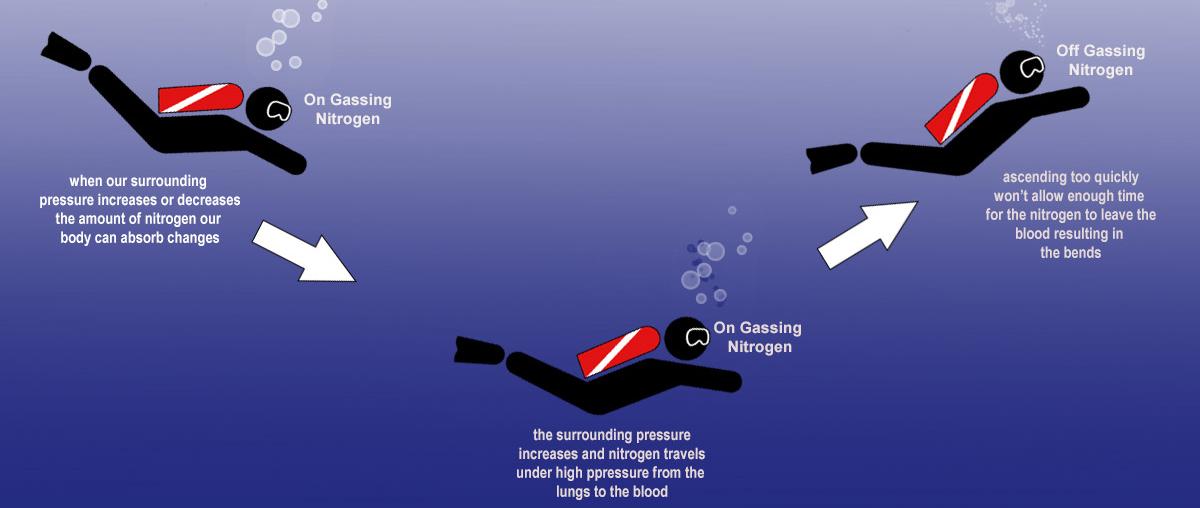If the dimensions of a figure are increased by a factor of 7 By what factor does the volume change. A significant number of cases of decompression illness we see are related to the diver having a Patent Foramen Ovale PFO.

Which Factor Increases The Risks Associated With Diving Into Water A Being Able To Swim Brainly Com
Diving during the day.

. Market risks or those associated with changes in market conditions such as fluctuations in prices interest rates and exchange rates. Not seeing the bottom C. Which factor increases the risks associated with diving into water.
Drowning if an air supply fails or decompression illness specific to the workplace environment human factors or the natural environment. Drowning is often the consequence of a diver panicking or going unconscious. Among adults a frequent contributing factor to drowning deaths is.
2 days agoWhich factor increases the risks associated with diving into water. Which factor increases the risks associated with diving into water. Diving during the day.
The cabin pressure of commercial aircraft may be the equivalent of 60008000 ft 18292438 m. Thus divers should wait before flying at an altitude 2000 ft 610 m for. Having a friend present B.
Which factor increases the risks associated with diving into water a. Having a friend present B. Seeing the bottom d.
Heart muscle birth defects low cardiovascular fitness use of alcohol or tobacco a high percentage of body fat old or current injuries lung disease diving in cold water and fatigue. Being able to swim B. Not seeing the bottom C.
The factor increase the risk associated with diving into water is there is oxygen in the water there is oxygen in the water and fish can solace. What is the hallmark finding for a patient with decompression sickness. What are The three basic types of risks associated with international cash flows.
Credit risks or those associated with the potential for not. Being able to swim D. This might be because of malfunctioning equipment for example a regulator that doesnt work properly or non.
This heart condition can depending on the sizetypecharacteristics of the opening increase the risk of decompression illness for a diver. Fractures to the spine arms legs and ribs. Water is an abiotic factor in terrestrial environments.
Not seeing the bottom C. Lack of physical fitness increased age obesity dehydration physical injury alcohol use during diving repetitive dives and traveling to altitude to dive are some of the risk factors that may lead to higher incidences of dcs1the best outcomes after diving are in physically fit individuals who are well-hydrated and who follow their dive. Nitrogen narcosis is one of the reasons that diving beyond 60 feet requires additional training after your first certification.
Scuba diving involves some inherent risks and because of these risks it requires special training. Which factor increases the risks associated with diving into water. Pain Which substance coats the alveoli to help keep them open.
Having a friend present. Hazards that apply to the activity all or most of the time eg. Age gender body mass index smoking asthma diabetes cardiovascular disease previous decompression illness years since certification dives in last year number of diving days number of dives in a repetitive series last dive depth nitrox use and drysuit use.
A statistical study published in 2005 tested potential risk factors. Being able to swim D. Medical issues can play a big part in the increased risk of decompression illness.
Although DCS hits randomly there are a few factors that may put you at higher risk of developing this illness. Having a friend present B. What factor increases the risks associated with diving into water.
Having a friend present. This can lead to poor decisions by the diver resulting in DCS or other problems. Seeing the bottom increases the risks associated with diving into the water.
The risk of developing decompression sickness increases when divers go to increased altitude too soon after a dive. Which factor increases the risks associated with diving into water. True or false Heredity is considered a controllable risk factor Asked by wiki 15062021 in English viewed by 75 persons.
Heart rate slows larynx spasms breathing is inhibited. Which factor increases the risk associated with diving into water. Seeing the bottom C.
Expert answeredJojihPoints 1118 Log in for more information. You are called to treat a 34 year old male patient who is complaining of joints and itching and burning of the skin. Diving during the day B.
Being able to swim D. The primary risk to swimmers who dive into water from a diving board shore poolside boat or dock include. Being able to swimc.
Generally the hazards of diving and snorkelling are either. Even if Decompression Sickness is the most common risk of scuba diving to talk about there are more drowning accidents within the diving community. What refers to the dimensions of the unit that holds computer circuitry.
Business risks or those associated with an organizations particular market or industry.

Dealing With Risks Associated With Freediving Deeperblue Com

0 Comments